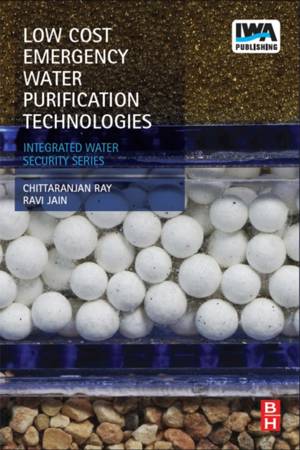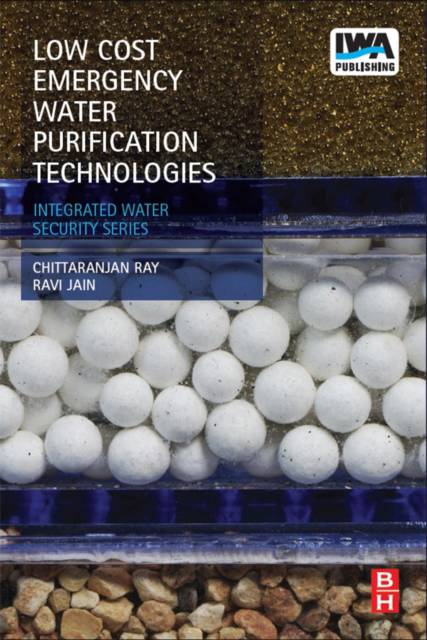
- Afhalen na 1 uur in een winkel met voorraad
- Gratis thuislevering in België vanaf € 30
- Ruim aanbod met 7 miljoen producten
- Afhalen na 1 uur in een winkel met voorraad
- Gratis thuislevering in België vanaf € 30
- Ruim aanbod met 7 miljoen producten
Zoeken
Low Cost Emergency Water Purification Technologies
Chittaranjan Ray, Ravi Jain, Uwe Schroder, Jurg Keller, William Maddaus, Michelle Maddaus
Paperback | Engels
€ 55,95
+ 111 punten
Uitvoering
Omschrijving
Natural disasters, such as floods, tsunamis, hurricanes, and earthquakes, affect over 226 million people every year. The occurrence of these natural disasters has been increasing every year due to the effect of extreme weather events and higher populations living in areas vulnerable to natural hazards. Developing a guideline for emergency water treatment becomes even more important as the number of natural events continues to increase.
Simple and low cost technologies have been developed to provide ways to treat water, ranging from point of use (POU) treatment to small scale (SS) community treatment. During times of natural disasters, POU and SS technologies offer applicable ways for providing clean and safe water. This guide to emergency water treatment has been developed based on current research, products, and field studies to create an expeditious and easy process for choosing which technology is most appropriate in each emergency situation. Initial, rapid response for water treatment should have the following characteristics:
Co-Published with Elsevier
Authors: Chittaranjan Ray: Water Resources Research Center and Environmental Center, University of Hawaii at Manoa, HI, USA & University of the Pacific, Stockton, California. Ravi Jain, Uwe Schroder, Jurg Keller, William Maddaus, Michelle Maddaus
Simple and low cost technologies have been developed to provide ways to treat water, ranging from point of use (POU) treatment to small scale (SS) community treatment. During times of natural disasters, POU and SS technologies offer applicable ways for providing clean and safe water. This guide to emergency water treatment has been developed based on current research, products, and field studies to create an expeditious and easy process for choosing which technology is most appropriate in each emergency situation. Initial, rapid response for water treatment should have the following characteristics:
- Portable
- Low cost
- Light weight
- Ease to use or requiring minimal training
- Requiring minimal or no external power
- Ability to support a community or large population
- Able to purify large volume of water
- Parts that do not require frequent replacements
- Does not require complex training to operate
- Uses easily available power sources
Co-Published with Elsevier
Authors: Chittaranjan Ray: Water Resources Research Center and Environmental Center, University of Hawaii at Manoa, HI, USA & University of the Pacific, Stockton, California. Ravi Jain, Uwe Schroder, Jurg Keller, William Maddaus, Michelle Maddaus
Specificaties
Betrokkenen
- Auteur(s):
- Uitgeverij:
Inhoud
- Aantal bladzijden:
- 179
- Taal:
- Engels
Eigenschappen
- Productcode (EAN):
- 9781780406428
- Verschijningsdatum:
- 5/06/2014
- Uitvoering:
- Paperback
- Formaat:
- Trade paperback (VS)
- Afmetingen:
- 156 mm x 234 mm
- Gewicht:
- 370 g

Alleen bij Standaard Boekhandel
+ 111 punten op je klantenkaart van Standaard Boekhandel
Beoordelingen
We publiceren alleen reviews die voldoen aan de voorwaarden voor reviews. Bekijk onze voorwaarden voor reviews.











